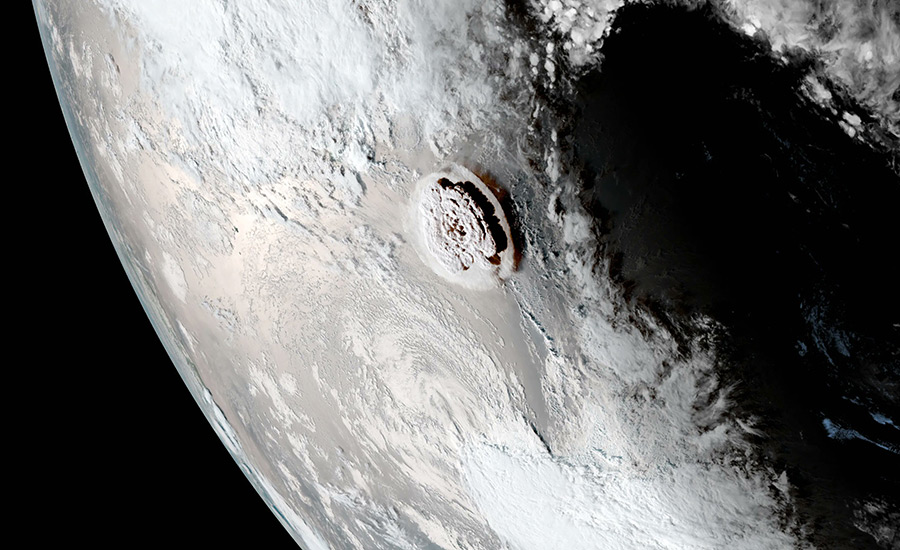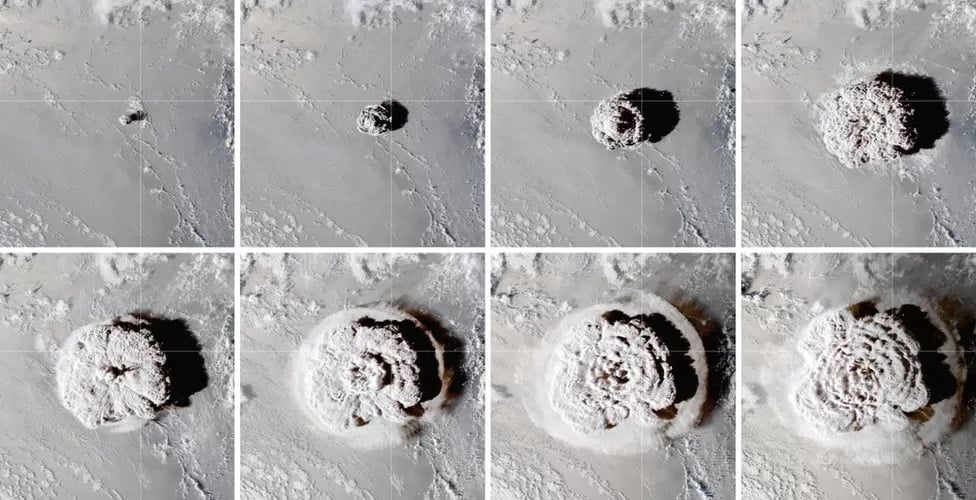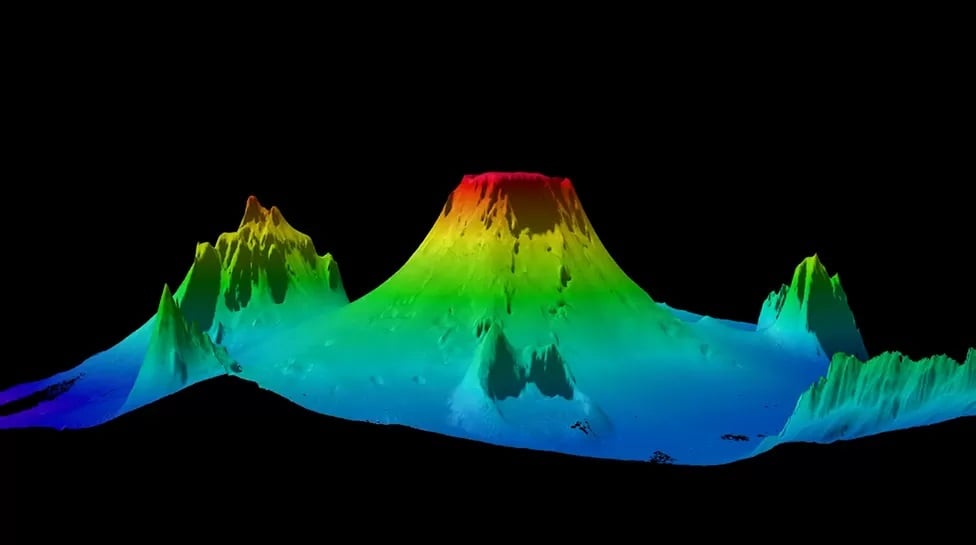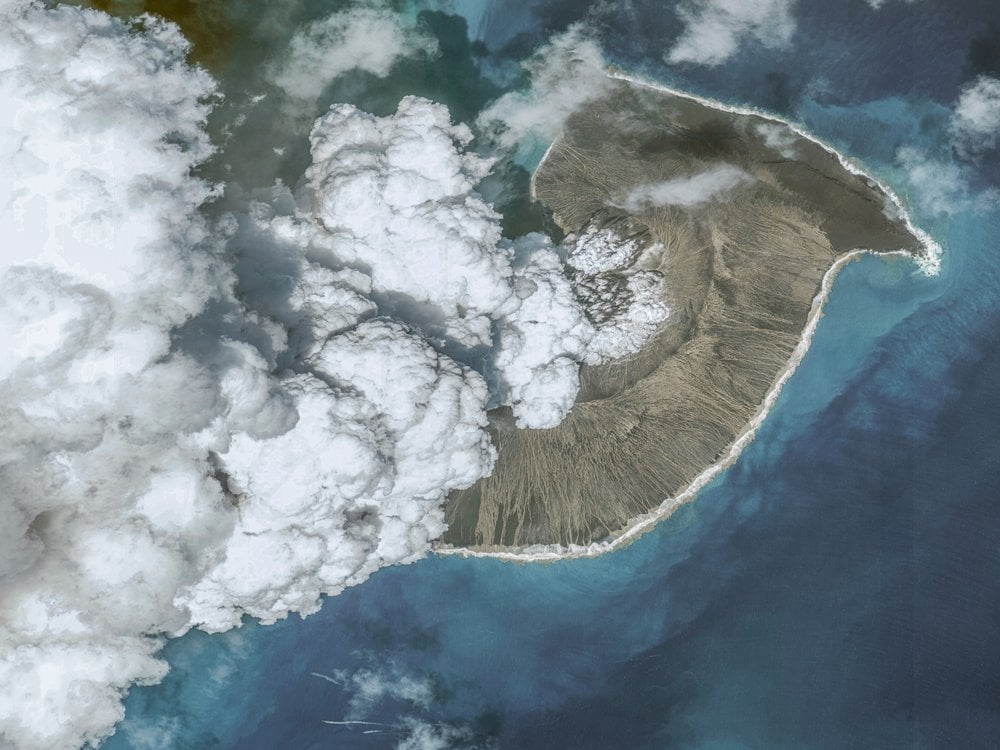Tonga volcanic eruption in January sent as much as 4 million metric tonnes of water vapour into space, according to new research
The eruption of the Hunga Tonga undersea volcano in the Pacific Ocean early this year was so powerful that it sent a massive plume of water vapor into space, according to new research released.
A volcano launching water beyond the atmosphere had never before been observed by scientists. The research underscores the unusually violent nature of the eruption – and highlights the broader risks from undersea volcanoes.
Satellite observations show that the 15 January eruption propelled water vapour 93 miles (149.6km) off the surface of the planet, well past the generally accepted boundary of space at 100km, or about 62 miles, according to one of the studies being presented in Chicago at the fall meeting of the American Geophysical Union.
The eruption sent as much as 4 million metric tonnes of water vapour into space, according to Larry Paxton, a scientist at Johns Hopkins University Applied Physics Laboratory in Laurel, Md.
“This is really a unique event,” Paxton said in an interview. “In the 20 years we’ve been making observations we’ve seen nothing like this.”
The event grabbed the attention of scientists who use satellites to monitor “space weather.”
Scientists track space weather because of the risk of a catastrophic solar storm that would send a plume of charged particles at the Earth, interacting with the planet’s magnetic field in a way that could damage satellites in orbit, or even affect the power grid on the surface.
Just before the volcano’s eruption (and purely by coincidence), a modest-sized solar storm had sent a burst of charged particles toward Earth.
But the volcano had an even more powerful effect on the ionosphere, according to Claire Gasque, a doctoral candidate in space physics at the University of California at Berkeley.
Among the shocking effects: A current known as the equatorial electrojet, which normally runs west to east in the ionosphere, reversed direction, she said.
“This was a moderate [solar] storm versus a very strong volcano. So that’s not to say a volcano would always win,” Gasque said in an interview.
The new data can help scientists improve their understanding of space weather, she said in an email: “This eruption is a good event to help us understand what a sudden impulsive blast of energy in the lower atmosphere can do to our space environment, which will hopefully improve future space weather prediction capabilities.”
Volcanologists have been busy in recent weeks due to the eruption of Mauna Loa, on Hawaii’s Big Island, and experts will also discuss those observations this week at the AGU meeting.
Mauna Loa is a relatively predictable volcano in the grand scheme of things and has been closely monitored for decades.
By contrast, submarine volcanoes like Hunga Tonga are often in very remote locations, and their potential for big eruptions remains largely unclear.
In January, the record-breaking Tonga blast sent tsunamis across the Pacific and created a sonic boom that could be heard in Alaska. Experts estimate that the amount of energy released by the eruption was as much as 60 megatonnes, roughly equal to the most powerful hydrogen bomb ever detonated.
“There are places in the South Pacific that could really use more study,” Jessica Ball, a volcanologist with the U.S Geological Survey, said in a recent interview.
“There are thousands of undersea volcanoes. Not all of those will be active. Sometimes we don’t know they are active until they start erupting.
This story was written by Joel Achenbach, originally published at Stuff NZ on 13 December 2022, reposted via PACNEWS.




